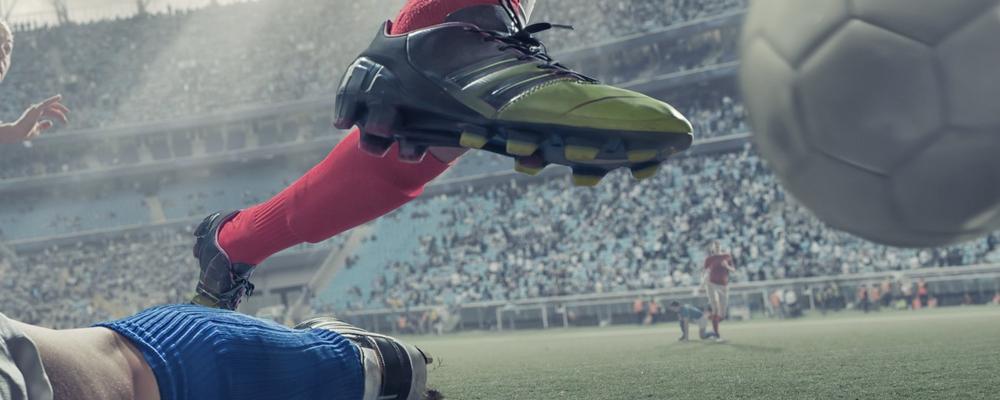
- Home
- News and events
- Find news
- Heightened medical monitoring of Sweden’s World Cup team
Heightened medical monitoring of Sweden’s World Cup team
Heightened medical checks are being carried out on the Swedish squad during the World Cup in Australia and New Zealand. There are now two doctors and three physiotherapists per match. One of the team’s doctors during the tournament is Mats Börjesson, a professor at the University of Gothenburg.
“This is my eleventh major tournament – European Championship, World Cup or Olympics – with the women’s national team,” he says. “We are also present during the season, at training sessions before and during international matches, and in between team gatherings we maintain regular contact with the players and their club teams around Europe and Sweden.”
Mats Börjesson is a Professor of Cardiology at the University of Gothenburg’s Sahlgrenska Academy and a cardiologist at Sahlgrenska University Hospital (Östra). As well as his role with the women’s national team, he is also the team doctor for Gothenburg’s Gais football club and works for the world football organization FIFA.
Two other national team doctors – orthopedist Houman Ebrahimi and GP Sadesh Balasingam – are also involved in the current World Cup tournament. Each match is attended by two team doctors (compared to one previously) and three physiotherapists (previously two).
More camera angles than TV viewers see
“We’ve continued to increase staffing since the European Championship in England last year,” continues Mats. “There are many more issues to deal with these days, including infection control, media issues, and so on. We also have a completely different surveillance system now, which enables us to monitor the players in real-time from different camera angles which aren’t shown on TV. When one of us runs on to deal with an injury, the other can watch replays and zoom in on the injury to get a clearer picture of what has happened. Information can be relayed to the colleague on the pitch, attending to the player, and increasing the speed and accuracy of diagnosis, not least in head traumas.

“As a team doctor, you are medically responsible for the team and the backroom staff, during the actual matches if there are any emergencies, injuries, or incidents, but also everything that happens between matches in terms of injuries, player rehabilitation, and, together with the fitness coach, assessing who is fit to play.”
Do you have the authority to stop someone from playing?
“To some extent we do, but such decisions are usually based on a discussion between the medical team and the player and then relayed to the coaches. We don’t select the team, but our cooperation works extremely well. There’s a consensus. They listen to the medical team if we say, for example, that someone can play for 60 minutes but maybe not for 90.
“Many people might not be aware that it’s actually the head referee who has overall formal medical responsibility during a match. In the case of a blow to the head, for example, the referee asks the doctor if the match can continue and then makes a decision. In more complex situations, things are different.
“If someone falls down on the pitch, you have to assume it’s a cardiac arrest, and then you simply run on. In medical terms, sudden cardiac arrest is the worst thing that can happen during a match.”
Cardiac safety is one of Mats’ own long-standing areas of research and expertise. He has helped to draw up guidelines for cardiac screening of elite athletes and cardiac safety at tournaments, such as how stadiums should be equipped with defibrillators and emergency preparedness.
Best team and fittest players win
A player’s heart rate is measured during matches using a device fitted to her bra, situated between the shoulder blades, and the data is used for both medical and training purposes, in order to individualize and optimize training and other activities. The medical team also collects large amounts of other self-reported data about the player’s perceived exertion during training and games, well-being, diet, sleep, stress levels and so on.
Unlike the rest of the backroom staff, the medical team has a duty of confidentiality. When doctors, physiotherapists, and sports psychologists pass on information, this is always done in accordance with the wishes of the player concerned. Mats emphasizes the importance of this principle.
Does working as a national team doctor provide input for your research?
“Yes, absolutely. We’ve done several different studies within sports medicine based on the needs that exist, such as why women suffer more anterior cruciate ligament injuries. One of the reasons turned out to be linked to factors such as various life events, stress, and pressure, immediately before the injury. We’ve also looked at iron deficiency in women and have been able to understand how exercise itself can affect iron absorption. And we’ve carried out studies on TENS – transcutaneous electrical nerve stimulation, a form of pain relief for menstrual pain, which could affect players’ performance.
“Another takeaway is the cooperation and communication within the team regarding the national squad. There are about 30 of us around the team: coaches, a medical team, a chef, a security manager, a media manager and others – a well-oiled machine where everyone plays their part and add their expertise.”
And how will it go?
“The risk of the team’s performance deteriorating is less when there’s a longer gap between games, like in this kind of tournament. However, you can’t substitute a player during a World Cup, as in other tournaments,” concludes Mats. “The best team usually wins. But the players must be at their peak performance and of course, also be available for selection, so the medical aspect is absolutely crucial.”